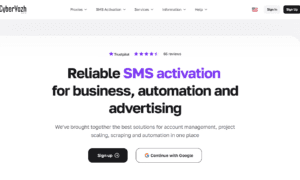In the digital-first world we live in today, mobile apps are not just a nicety, they’re a key business tool. Whether you’re an upstart seeking to disrupt a market or an enterprise streamlining internal processes, how you develop your app is just as important as what it does.
Selecting the most suitable mobile app development service provider is influenced by: time to market, user experience, scalability, maintenance, and cost of ownership. With various approaches in hand, from native to hybrid and progressive web apps, there’s a necessity to balance the advantages and disadvantages of each approach prior to development.
This blog discusses the main methods of Kaku Press app Tips and Tricks on Tech development and provides a strategic perspective to guide you in making a choice between them based on your business objective.
Read More: How to download Kaku press app?
Native App Development
Native apps are developed exclusively for a single platform, often iOS or Android, with programming languages and tools that are formally endorsed by the platform (e.g., Swift for iOS and Kotlin/Java for Android).
Read more: Kaku Press App REVIEW
Key Advantages
- High Performance: Native applications offer optimal speed and responsiveness. They can easily support complex animations, big data operations, and real-time features.
- Full Hardware Access: Native application development provides direct access to device components like GPS, camera, accelerometer, and push notifications.
- Platform-Specific UI/UX: The developers can use each platform’s native UI controls, resulting in a more intuitive user interface.
Limitations
- Higher Cost: You require individual codebases for iOS and Android, usually translating to the employment of two specialist development teams.
- Longer Development Time: It takes longer and more resources to develop and maintain two different apps.
Best For:
Companies that value performance and user experience, such as gaming, fintech, or enterprise-level apps.
Hybrid App Development
Hybrid apps are coded with web technologies (HTML, CSS, JavaScript) and packaged in a native container. Apache Cordova and Ionic are frameworks that facilitate hybrid development.
Key Advantages
- Simplified Time to Market: One codebase for all systems shortens development time.
- Reduced Development Costs: Hybrid development is usually less expensive because fewer resources are required.
- Easy Updates: Updates are delivered more quickly, sometimes without App Store approval.
Limitations
- Performance Gaps: Hybrid apps can fall behind native apps in terms of performance, particularly for graphically heavy or real-time applications.
- Restricted Native Functions: Although plugins enable hardware access, they will not necessarily support every native function or be updated regularly.
Best For
Startups or MVPs where there is a need for fast deployment with reasonable performance expectations.
Cross-Platform App Development
Cross-platform frameworks such as React Native, Flutter, and Xamarin enable the development of code once and deploy it on iOS and Android platforms with almost native performance.
Key Advantages
- Reusable Codebase: Reuse 90% of the code across platforms, speeding up development.
- Native-like Performance: Particularly with Flutter and React Native, performance comes very close to native applications.
- Community and Tooling: Big developer communities and third-party libraries simplify development issues.
Limitations
- Platform-Specific Tweaks: You may still have to write some platform-specific code.
- Tooling Overhead: Supporting build pipelines and dependencies across platforms can be tricky.
Best For
Companies requiring a combination of performance, cost-effectiveness, and quicker time-to-market, e.g., eCommerce, media, social platforms.
Progressive Web Apps (PWAs)
PWAs are web apps that leverage modern web features to provide an app-like experience via mobile browsers. They can be accessed through URLs and installed on a device similar to a native app.
Key Advantages
- No App Store Approval: PWAs can be accessed directly through a browser, without the App Store.
- Lightweight and Fast: PWAs are generally smaller in terms of size and can work offline with the aid of service workers.
- Easy Maintenance: Updating a PWA is just like updating a website, no intervention is required by the user.
Limitations
- Limited iOS Support: Despite increasing compatibility, iOS still has partial support for some PWA features.
- No Deep Device Integration: PWAs do not gain access to native hardware APIs such as Bluetooth or biometrics.
Best For
Kaku Press Content-rich apps or services with wide accessibility at minimal development costs like news sites, booking sites, or in-house enterprise applications.
Low-Code/No-Code Platforms
These platforms allow users to create apps with visual development interfaces and little hand-coding. Examples: OutSystems, Mendix, and Appgyver.
Key Advantages
- Rapid Prototyping: Rapidly prototype and iterate with little code writing.
- Lower Development Cost: Suitable for non-technical users or internal teams.
- Intrinsic Scalability and Hosting: Most platforms include back-end services and hosting out-of-the-box.
Limitations
- Customization Constraints: Reduced flexibility when creating highly complex or specialized features.
- Vendor Lock-in: You’re locked into the platform’s ecosystem and pricing scheme.
Best For
Internal business tools, prototypes, or businesses with limited dev resources.
How to Choose the Right Approach
The choice of the proper mobile app development approach hinges on numerous factors:
| Consideration | Recommendation |
| Performance-critical app | Native or Flutter |
| Quick MVP or pilot | Hybrid, Cross-Platform, or Low-Code |
| Budget-conscious project | Cross-Platform or PWA |
| Broad accessibility | PWA |
| Platform-specific UX | Native |
| Internal app for employees | Low-Code or Hybrid |
Conclusion
No one solution fits all when it comes to mobile app development. Each method has its advantages and trade-offs. The optimal solution is what suits your project’s objective, budget, audience, and deadline.
Whether you’re building a high-performance app for the consumer market or a simple tool for your sales team, making an informed decision at the outset can save considerable time, cost, and frustration later.
Begin with a clear vision of what success is like for your mobile app, and select an approach that provides you with the freedom to expand and evolve. The appropriate platform can transform a great app concept into a lasting digital achievement.
If you’re navigating this decision for the first time or want a comprehensive overview, check out The Ultimate Guide to Mobile App Development in 2025 for better decision making.



































